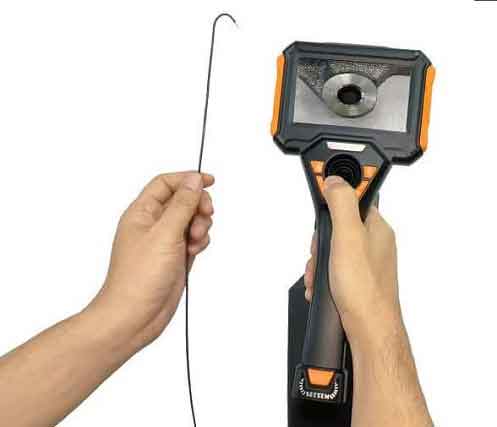Ultra-thin industrial endoscopes are high-precision, highly flexible inspection tools widely used in fields such as healthcare, aviation, precision manufacturing, and electronic circuit boards. However, due to their intricate construction and the complex environments in which they are used, many users often face issues of damage or performance degradation during operation. Ensuring the long-term use of ultra-thin industrial endoscopes is therefore particularly important. This article provides a series of practical tips and methods to help customers effectively extend the service life of ultra-thin industrial endoscopes.
1. Proper Operation
1.1 Follow Operating Guidelines
When using an ultra-thin industrial endoscope, it is essential to strictly adhere to the instructions in the operation manual. Each model of endoscope has its unique operating procedures and precautions. Following these guidelines can effectively prevent damage caused by improper operation.
1.2 Gentle Insertion and Withdrawal
When inserting or withdrawing the endoscope, do so gently and steadily to avoid damaging the probe or bending the insertion tube due to excessive force. Never use the endoscope as a tool, such as for pulling or applying external force, as this may cause severe damage to the lens or tubing.
1.3 Pay Attention to Environmental Conditions
Ensure the endoscope is used in suitable environmental conditions, such as avoiding high temperatures, humidity, or corrosive substances. Before use, check the operating temperature range of the endoscope to prevent damage to internal electronic components caused by overheating or moisture.
2. Lens Maintenance
2.1 Regularly Clean the Lens
Lens cleanliness is crucial for the image quality of ultra-thin industrial endoscopes. Use a soft, lint-free cloth or specialized cleaning tools to gently wipe the lens. Avoid using chemical cleaners, especially those that may corrode the lens coating.
2.2 Prevent Contamination
When using the endoscope, avoid contact between the lens and dust, dirt, or liquids. After each use, carefully inspect and clean the lens to keep it free of scratches and ensure optimal imaging performance.
2.3 Replace Damaged Lenses
If scratches or other damage are found on the lens, it is best to replace it promptly. A damaged lens not only affects image quality but may also reduce the durability of the endoscope in subsequent operations.
3. Regular Maintenance
3.1 Establish a Regular Inspection System
Develop a plan for regular inspection and testing of the ultra-thin industrial endoscope, such as every three months or before and after each use. Focus on key components such as the lens, insertion tube, connectors, and cables to ensure there is no damage, cracks, or wear.
3.2 Maintain Internal Components
Regularly use specialized equipment to inspect the electronic and optical components of the endoscope. Early detection of any electrical component failures can prevent greater losses and repair costs.
3.3 Perform Software Updates
If the ultra-thin industrial endoscope is equipped with a software system, regularly check for updates to further enhance its functionality and performance. Manufacturers often release software updates to improve performance and compatibility.
4. Storage Considerations
4.1 Use a Dedicated Storage Case
After each use, place the ultra-thin industrial endoscope in a dedicated protective case to prevent damage from dust, moisture, or physical impact.
4.2 Avoid Extreme Environments
When storing, avoid placing the endoscope in high-temperature, humid, or direct sunlight environments. Choose a dry, cool location and ensure it is not placed in areas prone to collisions or pressure to prevent unnecessary damage.
4.3 Seal for Storage
If the endoscope is used in special environments, clean it thoroughly after use and store it in a sealed bag to isolate it from air and moisture before placing it in the protective case. This helps prevent potential corrosion and damage during long-term storage.
5. Operator Training
5.1 Regular Training
Provide systematic training for all personnel operating the ultra-thin industrial endoscope, covering equipment use, maintenance, and emergency procedures. This is a critical step in ensuring proper use and reducing accidents.
5.2 Share Experiences and Case Studies
Encourage operators to share problems encountered and solutions during use. Document and pass down valuable insights to enhance the team’s awareness of equipment management and maintenance.
Conclusion
Ultra-thin industrial endoscopes, with their advanced technology and high flexibility, have become indispensable inspection tools in various industries. Proper operation, regular maintenance, and appropriate storage methods can significantly extend their service life. By paying attention to lens care, conducting regular inspections, and providing operator training, users can not only improve the efficiency of endoscope use but also greatly reduce failure rates and repair costs, thereby better meeting their practical work needs. We hope the above suggestions help users manage and extend the service life of ultra-thin industrial endoscopes more scientifically, ensuring they consistently deliver optimal performance.


